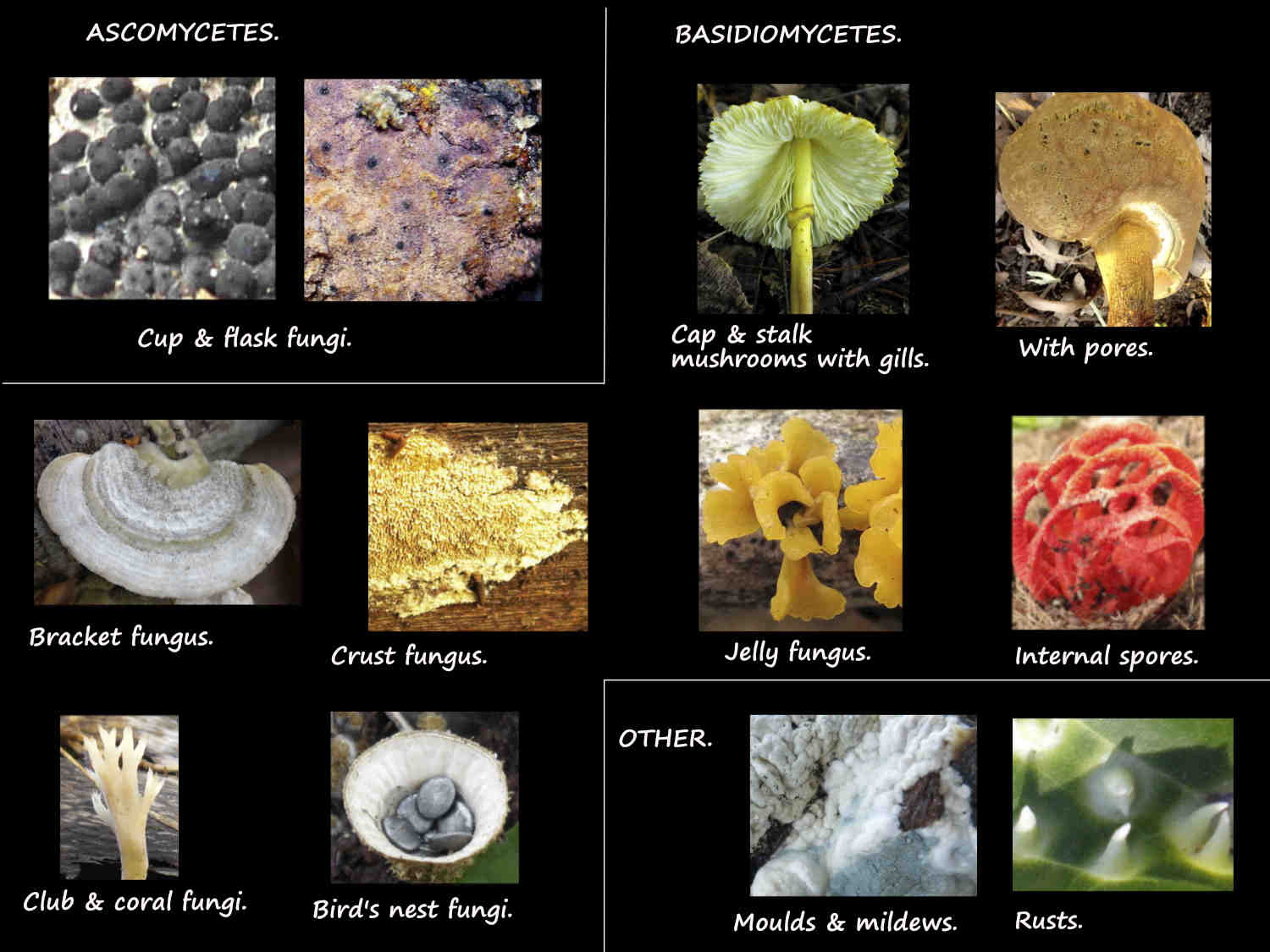1. What are fungi?
Fungi are uni- or multicellular eukaryotic organisms that are neither plants nor animals.
They have no chlorophyll so have to absorb all their nutrients and they reproduce by spores.
The term includes mushrooms, yeasts, rusts, smuts, puffballs, truffles, morels, and moulds.
Because moulds, yeasts, mushrooms, slime and water moulds superficially resemble each other they were originally included in the lower plants with mosses, liverworts and ferns.
In 1969 Fungi were recognised as a distinct group and it is now known that they are more closely related to animals than to plants.
One current scientific classification is:
Domain Eukaryota > Kingdom Fungi > Sub-kingdoms including Ascomycota and Basidiomycota.
The kingdom includes a huge diversity of shapes, habitats and life cycles.
It is estimated that there may be up to 5 million species with only about 5% formally classified.
They all require water and oxygen to survive.
Their cell walls are rigid and contain chitin rather than cellulose.
Growth is by budding or elongation of the hyphal tips.
Reproduction is by spores either asexually (by mitosis) or sexually (by meiosis).
Most live on the land but they can be found almost anywhere.
Many fungi have important symbiotic relationships with organisms from other Kingdoms.
Over 90% of all plant species have a relationship with a fungus.
The fungus obtains carbohydrates the plant has made by photosynthesis.
The fungus greatly improves the absorption of water and minerals by the plant.
Lichens are a symbiotic relationship between fungi and algae and/or cyanobacteria.
Some ants cultivate fungi.


